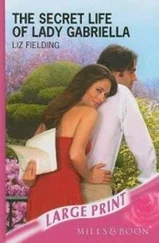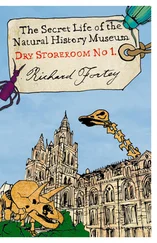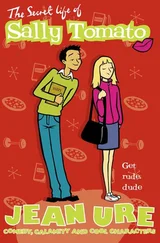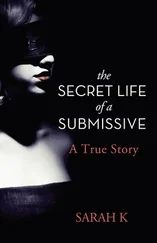Marilyn later said that if she hadn’t known he was a baseball player, she would have picked him out as “either a steel magnate or a congressman.” He was quiet and thoughtful, not at all the boastful sports hero she had expected. He didn’t say much. Instead, he just stared into his glass of vodka, straight with lime. “You know, there’s a blue polka dot right there in the middle of your tie,” she mentioned, trying to make small talk. “Did you fix it so that it would be like that—right in the middle like that?” He shook his head and tried to avoid her steady gaze. She later recalled thinking that he was adeptly playing one of her best games—the one where she is enigmatic and elusive, and as a result inspires great curiosity from everyone in her midst. However, she did wonder how two could play such a game and quickly concluded that not much would ever be said between them.
What most impressed Marilyn about Joe on this night was that despite his quiet, almost sullen demeanor, he somehow still managed to command the table. In fact, the whole room. Sitting there in his white silk shirt, pearl-gray silk tie, and black trousers, he seemed more like a movie star with the golden tan of a playboy than some jock from New York. He wasn’t good-looking: His face was all sharp angles, his teeth not only bucked but haphazardly arranged, his eyes too close together. He was lanky and spindly. He didn’t walk, he lumbered. It didn’t matter, though. He was still power personified; it seemed to emanate from him, that’s how much attention he generated just by his mere presence in a booth in the back of the restaurant. Marilyn was used to getting that kind of rapt attention from onlookers, but on this night she was just… another fan. Or, as she so perfectly put it, “Sitting next to Mr. DiMaggio was like sitting next to a peacock with its tail spread, that’s how noticeable you were.” There was no doubt in her mind that she was fascinated.
After their meal, Marilyn apologized, said she was exhausted and needed to get to bed. “I have to be at the studio in the morning,” she explained. When Joe offered to walk her to her car, she didn’t turn him down. In fact, she hoped it might give her a little more time to learn more about him. A bevy of smiling faces saw the couple out of the restaurant, all fans of Joe’s—a few of Marilyn’s too, but hers seemed a lot less excited than his.
Once in the parking lot, Joe asked her to drive him back to his hotel, the Knickerbocker. In her memoir, she recalls that she eagerly agreed because she didn’t want the evening to end just yet. She remembered that when they got back to the hotel, they agreed that it had been such a lovely evening, it was a shame to end it. So they tooled around Beverly Hills for three hours—and anyone who knows Beverly Hills knows that it’s not exactly a metropolis. Indeed, any two people driving about there for three hours are not looking at the sights but rather are preoccupied with each other.
For the record, the two had actually met a couple years earlier. Back in 1950, when Marilyn was with Johnny Hyde, his nephew, a young William Morris agent named Norman Brokaw, booked her on an NBC program called Lights, Camera, Action , a thirty-minute variety show hosted by actor Walter Wolf King. Marilyn had a brief walk-on part in a sketch—it was just a way for Brokaw to get some televised footage in order to possibly secure future bookings for her. After the show, Norman and Marilyn walked down Vine Street from the affiliate KNBH studio—now KNBC in Los Angeles—to the famous Brown Derby restaurant. As they had dinner, the actor William Frawley (Fred Mertz from I Love Lucy ) came over to the table. After Norman introduced him to Marilyn Monroe, Frawley said, “You know, I’m sitting over there with Joe D. He really wants to meet this young lady. But he’s very shy…” Norman said, “Sure. On our way out, we’ll come by and say hello.” After Frawley left, Marilyn turned to the agent and said, “So, who’s Joe D.?” He said, “That’s Joe DiMaggio, one of the greatest baseball players of all time.” It meant nothing to her. Then he said, “But I guarantee you that if I introduce you to him, he’s going to want your telephone number. Is that okay?” She said it was fine. As they were leaving the Derby, Norman took Marilyn to Joe’s table. “Joe, this is Marilyn Monroe,” he said, “a young lady we have a great feeling about for the future. I think she’s going to be a big star.” Joe looked at her warmly, but he was clearly bashful. Barely able to meet her gaze, he said, “Well, listen, you’re in the right hands with Norman. He’s a great agent.” They shook hands, said goodbye, and that was the extent of it.
“Sure enough, the very next morning, one of my first calls was Joe DiMaggio wanting her telephone number,” Brokaw recalls. “I gave it to him. Then I called her up and said, ‘Marilyn, what’d I tell you. I just gave your telephone number to Joe D.’ ” It is not known whether Joe called her.
After their dinner in 1952, something began to stir in Marilyn Monroe. She’d never really experienced it before, at least to hear her tell it. She most certainly hadn’t been in love with Jim Dougherty. Joe Schenck was kindly and influential, but that wasn’t love either. And as much as she wished she could have been in love with Johnny Hyde, the emotion simply never materialized for her. However, the sudden warmth for and pull toward this new fellow, Joe DiMaggio, felt different, unlike anything she’d ever experienced with any other man. Indeed, with this one, it would definitely be… different.
The Nude Calendar Scandal
W ithin weeks of meeting Joe DiMaggio, Marilyn Monroe faced a career crisis when the nude photos taken by Tom Kelley a couple of years earlier—when Marilyn signed off as “Mona Monroe”—finally surfaced. Actually, they first had come to light on the John Baumgarth 1951 calendar. However, the connection between the naked model and Marilyn Monroe hadn’t been made—she wasn’t that famous yet, and the photos went unnoticed. By 1952 she was much more of a celebrity, with a few more movies under her belt and much more publicity from the studio. The Baumgarth company decided to use Monroe’s photos again for the 1952 calendar—and this time they would not be missed by anyone. When word of the photos began to circulate, the executives at Fox knew they had a big problem on their hands. No actress had ever done anything quite like this before, at least not in anyone’s recent memory. “I was sure that it would put an end to my fame and that I would be dropped by the studio, press and public and never survive my ‘sin,’ ” Marilyn later recalled.
She certainly had good reason to be concerned. The Hollywood studio system was incredibly puritanical, and had been since censorship regulations came into play in 1934. Film studios such as 20th Century-Fox had stringent moral clauses in their contracts that were designed to intimidate actors and actresses. They were forbidden to do anything immoral that might affect their image or that of the studio for which they worked, or they would be put under suspension. Not that this ever stopped most actors who were inclined to such behavior anyway. The moral clauses hadn’t informed certain decisions made by the likes of Elizabeth Taylor or Frank Sinatra or many other celebrities. They did what they wanted to and just accepted the suspension, considering it a vacation. But none of them had ever posed nude and then had the pictures distributed to a startled nation. Making it much worse for all concerned, this period in American history was particularly volatile due to Senator Joe McCarthy’s widespread fearmongering about Communism and its imminent infiltration of the United States due to the country’s loose sense of ethics and morality. In the midst of such caution came forth Marilyn Monroe, posing on a red velvet drape with her breasts—and nothing else, by the way—proudly exposed. By today’s standards, it’s difficult to imagine how these pictures could have caused such a sensation. They were just typical “cheesecake” fare—Marilyn striking an uncomfortable-looking pose with her arms extended over and behind her head, her perfect breasts perky and round, her back arched seductively, and her bent legs and hip discreetly covering her nether regions. However, in 1952, this kind of photography of a celebrity was definitely not the norm—and the reaction from Fox was quick panic. Marilyn was called into the studio and asked if, indeed, the photographs were of her. Yes, she admitted, they were. “But I really think Tom [Kelley] didn’t capture my best angle,” she added. Marilyn’s surprisingly nonchalant comment to Fox’s brass about the photographs demonstrates her savvy as a public relations strategist and also her ingenuity under pressure.
Читать дальше












